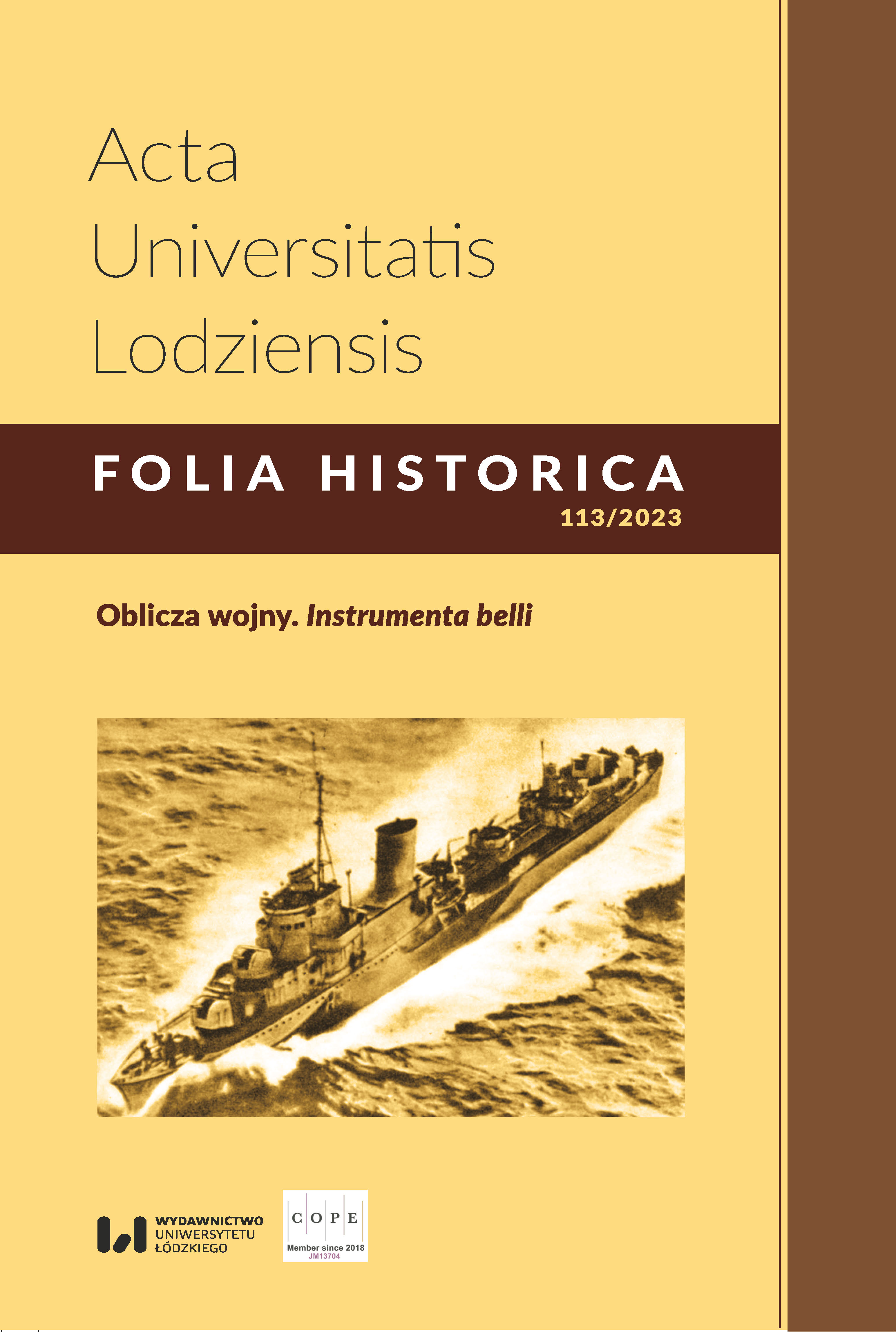Images of War in the Works of Stanisław Rembek
DOI:
https://doi.org/10.18778/0208-6050.113.08Keywords:
Stanisław Rembek, war, artistic traditions, naturalism, expressionismAbstract
Stanisław Rembek was both a historian who dealt with the past in a scientific context and a writer who created literary works based on historical events – those from the distant past and those of which the author was an eyewitness and participant. This article aims to present how in his works the writer portrayed war, showing the horror of soldiers’ experiences. In his novels he created images of everyday life in the trenches, struggles with hunger, oppressive cold, fear, and fighting to endurance limit. He noticed how the soldiers’ enthusiasm and willingness to fight under the influence of the protracted war gradually turned into fatigue, indifference and bitterness. Death was an inseparable element of the brutal descriptions of war reality present in Rembek’s works. However, it was not lofty or pathetic – the writer showed it in a naturalistic way, not avoiding drastic descriptions of the landscape after the battle. His characters felt a disharmony between the images of their heroic death and the images they witnessed every day. In his pictures of war, which were a testimony to his own experiences during the Polish-Bolshevik war (recorded in his war diary), Rembek referred to Stefan Żeromski’s naturalistic technique of depiction, Sienkiewicz’s tradition, expressionism, and Ernst Jünger’s concepts. He was accused of showing the “dirty realism of war”, which for some critics was a flaw in his work, while for others, it had a great value. However, he said: “My war is the one that it is in reality”.
Downloads
References
Baczyński K. K., Poezje, Lublin 1998.
Google Scholar
Rembek S., Adam Haniewicz, mps.
Google Scholar
Rembek S., Cygaro Churchilla, Warszawa 2004.
Google Scholar
Rembek S., Dzienniki. Rok 1920 i okolice, Warszawa 1997.
Google Scholar
Rembek S., Nagan, Warszawa 2007.
Google Scholar
Rembek S., W polu, Warszawa 1993.
Google Scholar
Słowacki J., Anhelli, Warszawa 1987.
Google Scholar
Stasiuk A., Tekturowy samolot, Wołowiec 2000.
Google Scholar
Gosk H., Estetyczny wymiar etyki w literackich obrazach Wielkiej Wojny (Jaroslav Hašek, Erich M. Remarque, Stanisław Rembek), [w:] Zamiast końca historii. Rozumienie oraz prezentacja procesu historycznego w polskiej prozie XX i XXI wieku podejmującej tematy współczesne, red. H. Gosk, Warszawa 2005, s. 72–88.
Google Scholar
Jarzębski J., Społeczeństwo na polu bitwy, „Teksty Drugie” 1991, nr 1/2, s. 162–168.
Google Scholar
Kołaczkowski S., Wojna jako mistrzyni, „Prosto z mostu” 1939, nr 26, s. 2–3.
Google Scholar
Kołaczkowski S., Wojna jako mistrzyni, „Prosto z mostu” 1939, nr 27, s. 4–5.
Google Scholar
Lalak M., Między historią a biografią. O prozie Stanisława Rembeka, Szczecin 1991.
Google Scholar
Lalak M., Niepokojąca reszta. Szkice krytyczne, Szczecin 2004.
Google Scholar
Ludorowski L., O postawie epickiej w Trylogii Henryka Sienkiewicza, Warszawa 1970.
Google Scholar
Moskalska G., Stanisław Rembek (1901–1985), „Miesięcznik Prowincjonalny” 2008, nr 1, s. 31–36.
Google Scholar
Pluta J. J., Obraz wojny w międzywojennej prozie Rembeka (na podstawie powieści „Nagan” i „W polu”), „Rocznik Naukowo-Dydaktyczny Wyższej Szkoły Pedagogicznej. Prace Historyczno-Literackie VII” 1978, s. 159–178.
Google Scholar
„Trylogia” Henryka Sienkiewicza. Studia, szkice, polemiki, oprac. T. Jodełka, Warszawa 1962.
Google Scholar
Urbanowski M., Wojna jako mistrzyni? Ernst Jünger i Stanisław Rembek, [w:] Ernst Jünger (1895–1998): bojownik, robotnik, anarcha, red. W. Chołostiakow, J. Michalczenia, Olsztyn 2013, s. 63–87.
Google Scholar
Masłoń K., Babel po polsku, https://www.historia.uwazamrze.pl/artykul/972335/babel-po-polsku (dostęp: 19 IV 2018).
Google Scholar
Downloads
Published
How to Cite
Issue
Section
License

This work is licensed under a Creative Commons Attribution-NonCommercial-NoDerivatives 4.0 International License.











